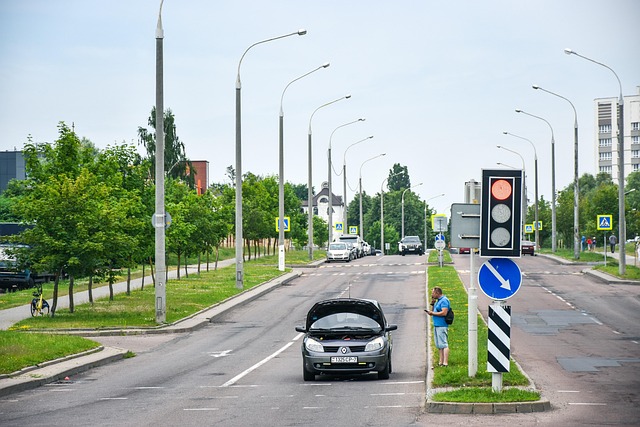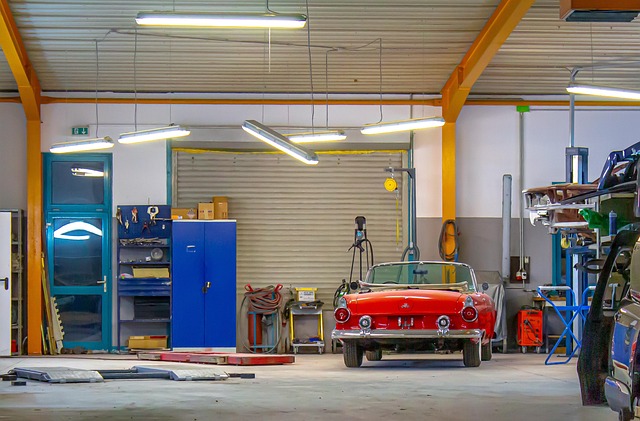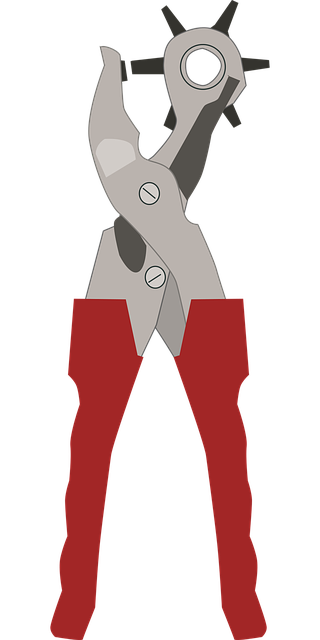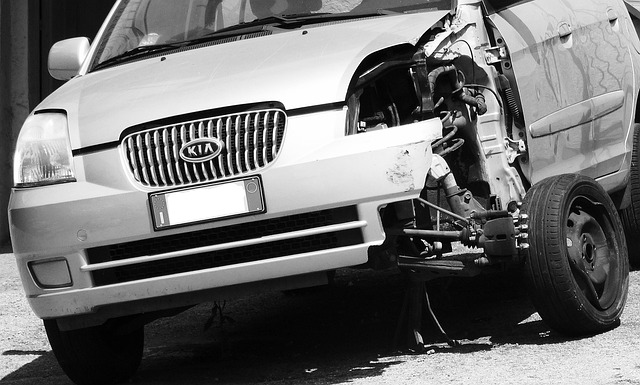Mercedes Structural Repair: ADAS Recalibration for Safety and Performance
Mercedes structural repair goes beyond aesthetics, focusing on restoring safety and integrity after…….
Welcome to an in-depth exploration of a critical aspect of automotive engineering: Mercedes structural repair. This article aims to unravel the intricacies of this specialized field, offering valuable insights for professionals, enthusiasts, and anyone curious about the art and science behind restoring Mercedes-Benz vehicles to their optimal state. From understanding the fundamentals to delving into global trends and future prospects, we will navigate every facet of Mercedes structural repair, ensuring a comprehensive learning experience.
Mercedes structural repair encompasses the intricate process of restoring or replacing damaged or deteriorated components of a Mercedes-Benz vehicle’s structure. This includes the chassis, body panels, frames, and related parts that provide the essential framework for the entire car. The primary goal is to ensure structural integrity, safety, and aesthetic appeal while adhering to strict quality standards set by Mercedes-Benz and relevant automotive regulations.
The scope of Mercedes structural repair involves several key components:
Chassis Inspection and Repair: This process begins with a thorough inspection of the vehicle’s chassis, identifying any cracks, corrosion, or damage. Repairs may include welding, replacement of faulty components, or adjustment to ensure proper alignment.
Body Panel Restoration: Body panels, such as doors, fenders, and hoods, are carefully inspected for dents, creases, or significant damage. Techniques like panel beating, spot welding, and the use of specialized adhesives are employed to restore these parts to their original condition.
Frame Straightening: In cases of severe accidents or damage, frame straightening is crucial. This involves using advanced equipment to accurately measure and adjust the vehicle’s frame back to its original specifications, ensuring proper suspension geometry and safety systems function correctly.
Welding and Joining Techniques: Skilled technicians utilize various welding methods, including resistance spot welding, laser welding, and TIG (Tungsten Inert Gas) welding, to join metal components precisely. These techniques are vital for maintaining structural integrity and minimizing distortion.
Computerized Alignment Systems: Modern Mercedes vehicles rely on sophisticated computerized alignment systems. Repairs must consider these systems to ensure accurate wheel alignment, suspension adjustment, and optimal handling after the repair process.
Mercedes-Benz has a long history of setting benchmarks for automotive quality and innovation. As such, their structural repair processes have evolved alongside advancements in materials science, manufacturing techniques, and safety standards. Over time, Mercedes has developed sophisticated methods to handle complex repairs, ensuring that restored vehicles maintain their renowned level of precision and performance.
Mercedes structural repair transcends borders, with its principles and practices influencing the global automotive industry. The reputation of Mercedes-Benz for excellence sets a high bar for vehicle restoration and repair standards worldwide. Many international markets have embraced these standards, adopting similar approaches to ensure the safety and quality of repaired vehicles.
Different regions around the globe exhibit unique trends in Mercedes structural repair:
Europe: Known for its stringent safety regulations, European countries like Germany and the UK lead in advanced structural repair techniques. They prioritize precision engineering and adhere to strict industry standards set by organizations such as VDA (Association of the Automotive Industry) and ISA (German Institute for Standardization).
North America: In the US and Canada, there is a growing emphasis on environmental sustainability in automotive repairs. This trend encourages the use of eco-friendly materials and recycling practices during structural repair processes.
Asia Pacific: Countries like Japan and South Korea have developed robust structural repair industries, often focusing on innovative techniques to reduce repair times and costs while maintaining quality.
The global Mercedes structural repair market is characterized by:
| Region | Market Size (2022) | Growth Rate (2023-2025) | Key Drivers |
|---|---|---|---|
| Europe | $12.5 billion | 4.8% | Strict regulations, advanced technology adoption |
| North America | $8.7 billion | 3.2% | Increasing electric vehicle repairs |
| Asia Pacific | $9.3 billion | 5.6% | Rising luxury car sales, stringent safety standards |
The Mercedes structural repair market is a vital component of the global automotive aftermarket. Key economic factors driving this industry include:
Increasing Demand for Luxury Vehicles: Mercedes-Benz, as a premium brand, benefits from rising consumer preferences for luxury cars, leading to more complex structural repair requirements.
Stricter Safety and Emissions Standards: Governments worldwide are implementing stricter regulations, pushing the automotive industry to invest in advanced repair techniques and materials.
Technological Innovation: Investments in robotic welding, computer-aided design (CAD), and 3D printing are transforming structural repair processes, improving efficiency and accuracy.
Mercedes structural repair contributes significantly to economic systems:
Job Creation: This industry supports a network of skilled technicians, engineers, and support staff, contributing to local employment and economic growth.
Supply Chain Impact: Repairs generate demand for specialized parts and equipment, stimulating the supply chain and fostering competition among suppliers.
Vehicle Resale Value: High-quality structural repairs can significantly enhance a vehicle’s resale value, benefiting owners and dealers alike.
Technological advancements have revolutionized Mercedes structural repair:
Advanced Welding Techniques: The development of laser welding and TIG welding has improved precision and reduced heat input, minimizing metal distortion during repairs.
Computerized Measurement Systems: 3D scanning technology allows for precise measurement and analysis of vehicle damage, enabling more accurate repairs.
Robotic Automation: Robotic arms equipped with advanced sensors enhance consistency and speed in welding and panel beating processes.
Technological innovations have led to:
Reduced Repair Times: Automated systems streamline processes, allowing for faster turnaround times without compromising quality.
Improved Accuracy: Advanced equipment ensures consistent results, minimizing errors and the need for reworks.
Enhanced Safety: Modern tools and techniques prioritize operator safety by reducing exposure to hazardous materials and environments.
The future holds exciting possibilities for Mercedes structural repair technology:
Artificial Intelligence (AI): AI algorithms can analyze damage patterns, suggest repair methods, and optimize processes, increasing efficiency and reducing costs.
Augmented Reality (AR): AR headsets can provide real-time visual guidance to technicians, improving accuracy during complex repairs.
Additive Manufacturing: 3D printing technology can create custom replacement parts, offering greater design flexibility and potentially reducing lead times.
Mercedes structural repair operates within a web of international and regional regulations aimed at ensuring vehicle safety, environmental protection, and consumer rights:
United Nations Economic Commission for Europe (UNECE): Develops the Uniform Technical Prescriptions for Wheeled Vehicles (UTPV), setting minimum safety standards for vehicles, including structural integrity requirements.
European Union (EU) Regulations: The EU’s General Product Safety Directive (GPSD) and specific vehicle regulations ensure that repaired vehicles meet stringent safety criteria.
National Standards: Countries like the US (NHTSA), Canada (Transport Canada), and various European nations have their own standards and testing procedures for structural repairs.
To operate legally, Mercedes structural repair facilities must:
Obtain Certifications: This includes certifications for welding procedures, equipment calibration, and training credentials for technicians.
Stay Updated with Regulations: Regularly reviewing and adapting to changes in automotive regulations is essential to avoid legal complications and ensure consumer safety.
Implement Quality Control: Rigorous quality control measures guarantee that repaired vehicles meet or exceed industry standards.
Despite its advancements, Mercedes structural repair faces several challenges:
Complex Repairs: Modern Mercedes vehicles incorporate sophisticated safety systems and advanced materials, making complex repairs demanding and requiring specialized skills.
Parts Availability: Sourcing genuine replacement parts, especially for older model vehicles, can be challenging due to limited production runs or discontinued manufacturing.
Cost Considerations: The high cost of advanced equipment and training can pose financial hurdles for smaller repair facilities, potentially leading to price discrepancies in the market.
Criticisms of Mercedes structural repair include:
Lack of Standardization: Variations in repair procedures across different regions or shops may result in inconsistent quality. Standardizing practices while allowing regional adaptations can address this.
Environmental Impact: Traditional welding and paint processes can generate harmful emissions. Implementing eco-friendly technologies, such as water-based adhesives and low-VOC paints, can mitigate these concerns.
Technological Divide: Smaller workshops might struggle to keep up with the latest technological advancements. Providing training programs and resources can help bridge this gap.
Challenge: A classic Mercedes-Benz W220 (S-Class) from the early 2000s sustained significant rear-end collision damage, requiring frame straightening and panel restoration.
Solution: A specialized repair shop employed advanced frame straighteing equipment to accurately realign the vehicle’s chassis. Computerized 3D scanning was used to assess damage, and traditional panel beating techniques were combined with modern welding methods for a precise restoration.
Outcome: The restored vehicle achieved exceptional aesthetics and structural integrity. This case highlights the importance of combining traditional skills with advanced technology for successful classic car repairs.
Scenario: A recent model Mercedes-Benz C-Class was involved in a high-speed collision, necessitating extensive frame repair and body panel replacement.
Approach: The repair facility utilized robotic welding for precise metal joining, followed by computer-aided design (CAD) to ensure accurate alignment of the vehicle’s structure. Advanced water-based adhesives were employed for panel bonding.
Result: The vehicle was restored to its original specifications, achieving excellent safety ratings and customer satisfaction. This case study demonstrates the effectiveness of modern technologies in complex repairs.
The future holds promising opportunities for Mercedes structural repair:
Electric Vehicle (EV) Repairs: As EV sales grow, specialized skills and equipment will be required to handle unique repair challenges posed by electric powertrains.
Autonomous Vehicle Integration: Repair facilities may need to adapt to accommodate the increasing complexity of autonomous vehicle systems and their components.
Extended Warranty Services: Original Equipment Manufacturers (OEMs) could expand warranty coverage for structural repairs, driving demand for high-quality, specialized services.
To capitalize on future prospects:
Continuous Training: Repair shops should invest in ongoing training programs to keep technicians updated with new technologies and industry standards.
Collaboration and Partnerships: Industry collaboration can foster innovation, knowledge sharing, and the development of best practices.
Sustainability Focus: Embracing eco-friendly practices and materials can appeal to environmentally conscious consumers and meet regulatory requirements.
In conclusion, Mercedes structural repair is a dynamic and critical aspect of automotive engineering, essential for maintaining the renowned quality and safety standards associated with Mercedes-Benz vehicles. From its technical complexities to global implications, this field continues to evolve, driven by technological advancements, stringent regulations, and consumer expectations. As we look ahead, the future holds exciting possibilities, from integrating autonomous systems to addressing the unique challenges of electric vehicle repairs.
By understanding the intricacies of Mercedes structural repair, professionals can navigate the current landscape and prepare for the innovations that lie ahead. This article has provided a comprehensive overview, serving as a valuable resource for anyone interested in this fascinating aspect of the automotive industry.

Mercedes structural repair goes beyond aesthetics, focusing on restoring safety and integrity after…….

Mercedes structural repair is an art that focuses on restoring vehicles to their original factory sp…….

Mercedes structural repair is a critical service offered by auto collision centers, prioritizing veh…….

Mercedes structural repair is a specialized service crucial for restoring the integrity and strength…….

Mercedes structural repair after severe collisions demands meticulous precision from professional te…….

Mercedes structural repair has evolved dramatically, driven by a commitment to innovation and precis…….

Mercedes structural repair is a specialized service crucial for maintaining both safety and performa…….

After severe collisions, proper Mercedes structural repair is vital for both vehicle safety and aest…….

Mercedes structural repair is a meticulous process requiring advanced techniques and deep brand-spec…….